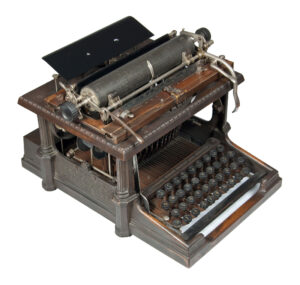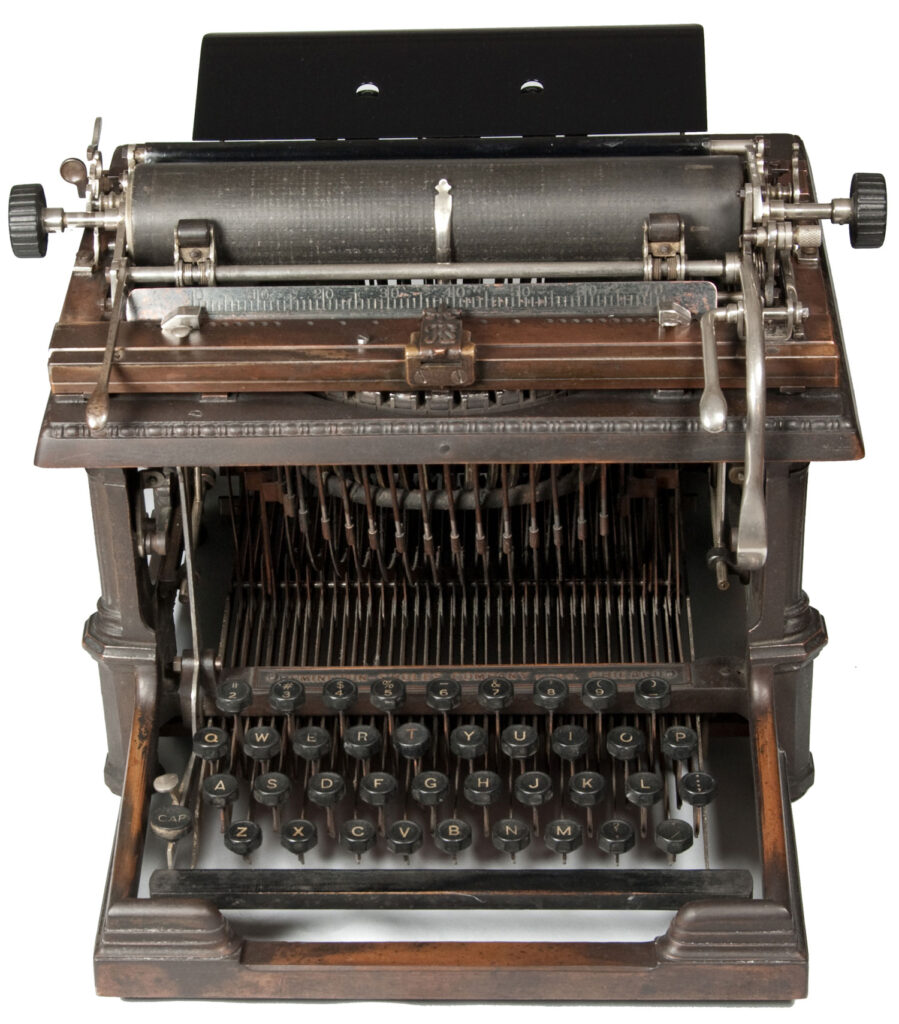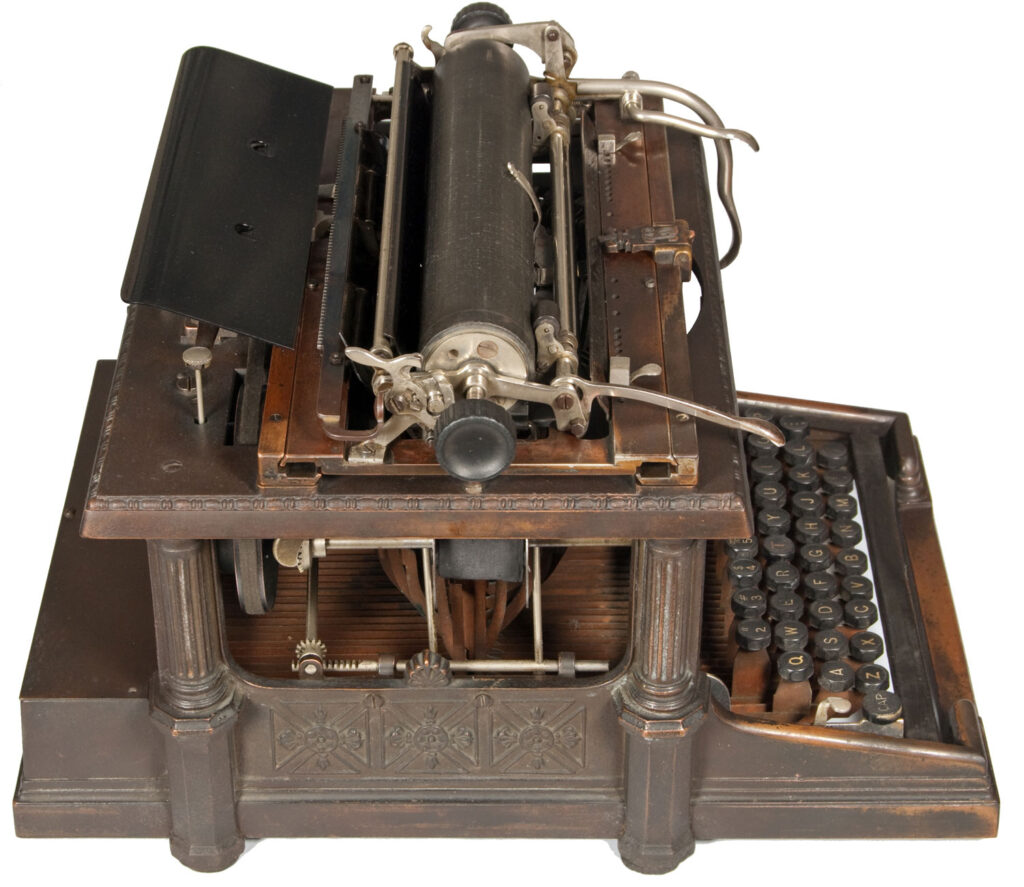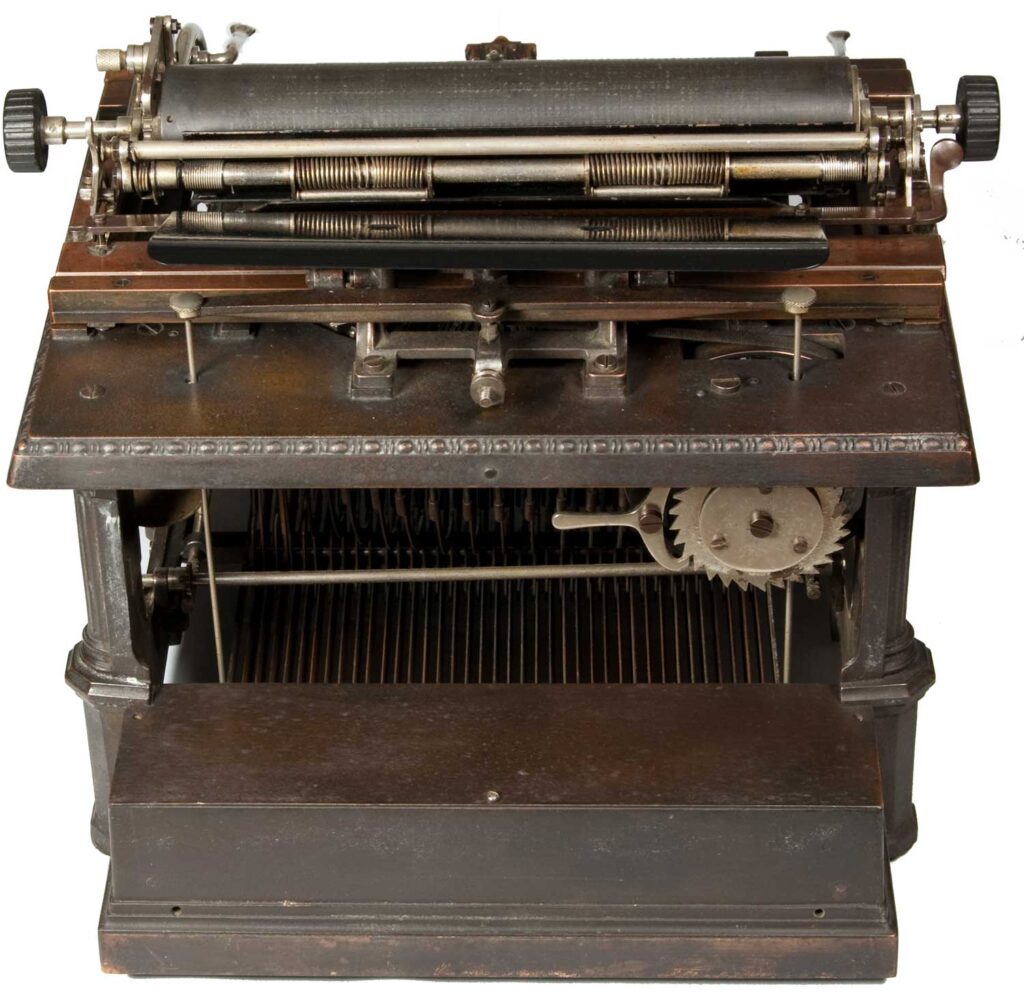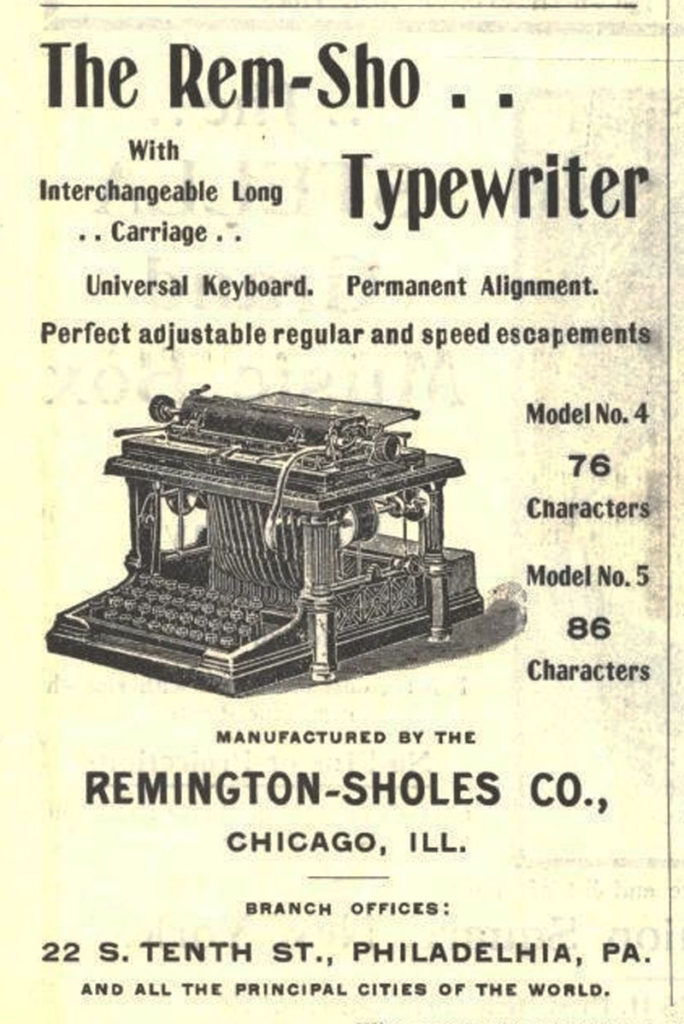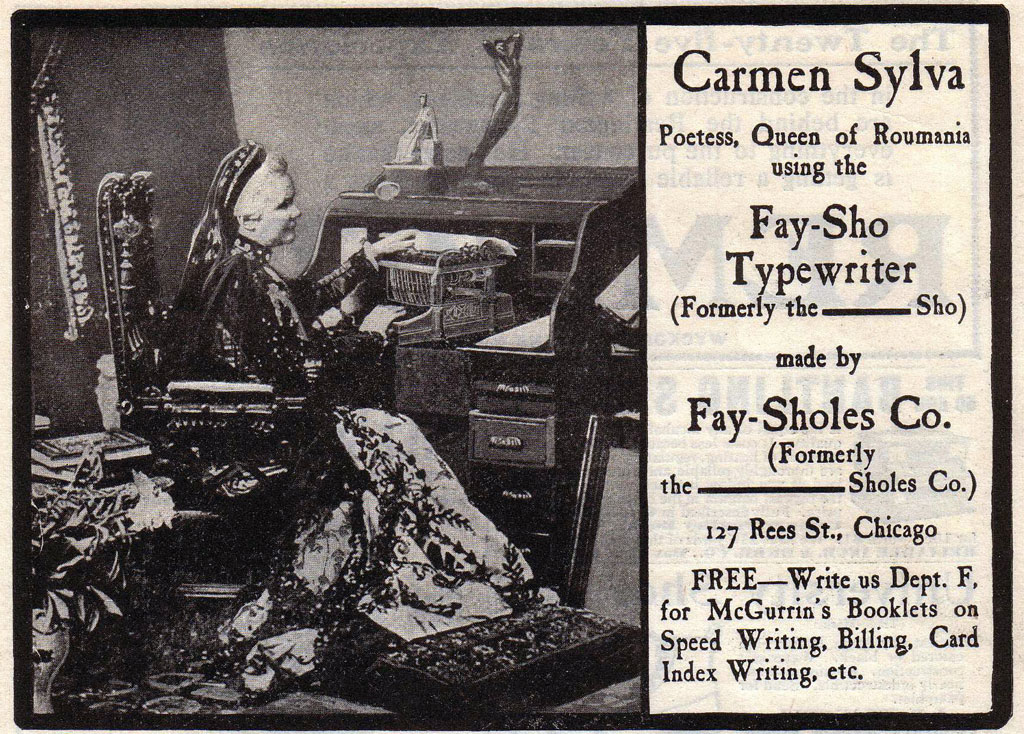The Remington Sholes typewriter was designed by architect Charles B. Atwood, who also created the Art Building at the 1893 Chicago World’s Fair. Remarkably, that building is the only one from the Fair still standing today, now home to the Museum of Science and Industry.
Atwood’s architectural sensibility is clearly reflected in the typewriter’s neoclassical form, which resembles a Greek temple. The cast iron frame features a gorgeous bronzed finish, achieved by heavy plating with oxidized copper. With time, this develops a rich and beautiful patina that should never be polished.
The Remington Sholes was the first typewriter to shift characters by moving the entire type-basket, or typebar assembly, rather than the carriage. This innovation required less force, giving the shift key a lighter touch. It was a forward-looking design that would become the standard for 20th-century typewriters.
The name Remington Sholes came from Franklin Remington, general manager and grandson of Eliphalet Remington, founder of E. Remington & Sons, who had manufactured the original Sholes and Glidden typewriter (Remington 1) beginning in 1874. Zalmon Sholes, co-namesake, was the son of Christopher Latham Sholes, the inventor of the Sholes and Glidden. However, E. Remington & Sons had sold all of their interests in the typewriter business to Wyckoff, Seamans & Benedict in 1885, so the family connection was no longer reflected in company ownership. As a result, E. Remington & Sons filed a lawsuit. In 1901, the court ruled in their favor, forcing the company to change the name of the typewriter to the Fay Sholes, and the company became the Fay Sholes Typewriter Co. (See the third advertisement below which reflects this name change.)
Interestingly, in 1905, the Supreme Court reversed the earlier ruling, stating that anyone could use their own name in business. Even so, the Fay Sholes Co. never changed its name again.
The Remington – Sholes originally sold for $97.50
“The Remington-Sholes is manufactured by the sons of the original inventor of the first Typewriter ever made. The simple and durable features promulgated by the fathers of these men are apparent in this latest production of their genius; at the same time the latest devices for convenience and speed have not been neglected.”
“The machine is designed to be one of the first in the market in beauty of design and richness of finish.”
